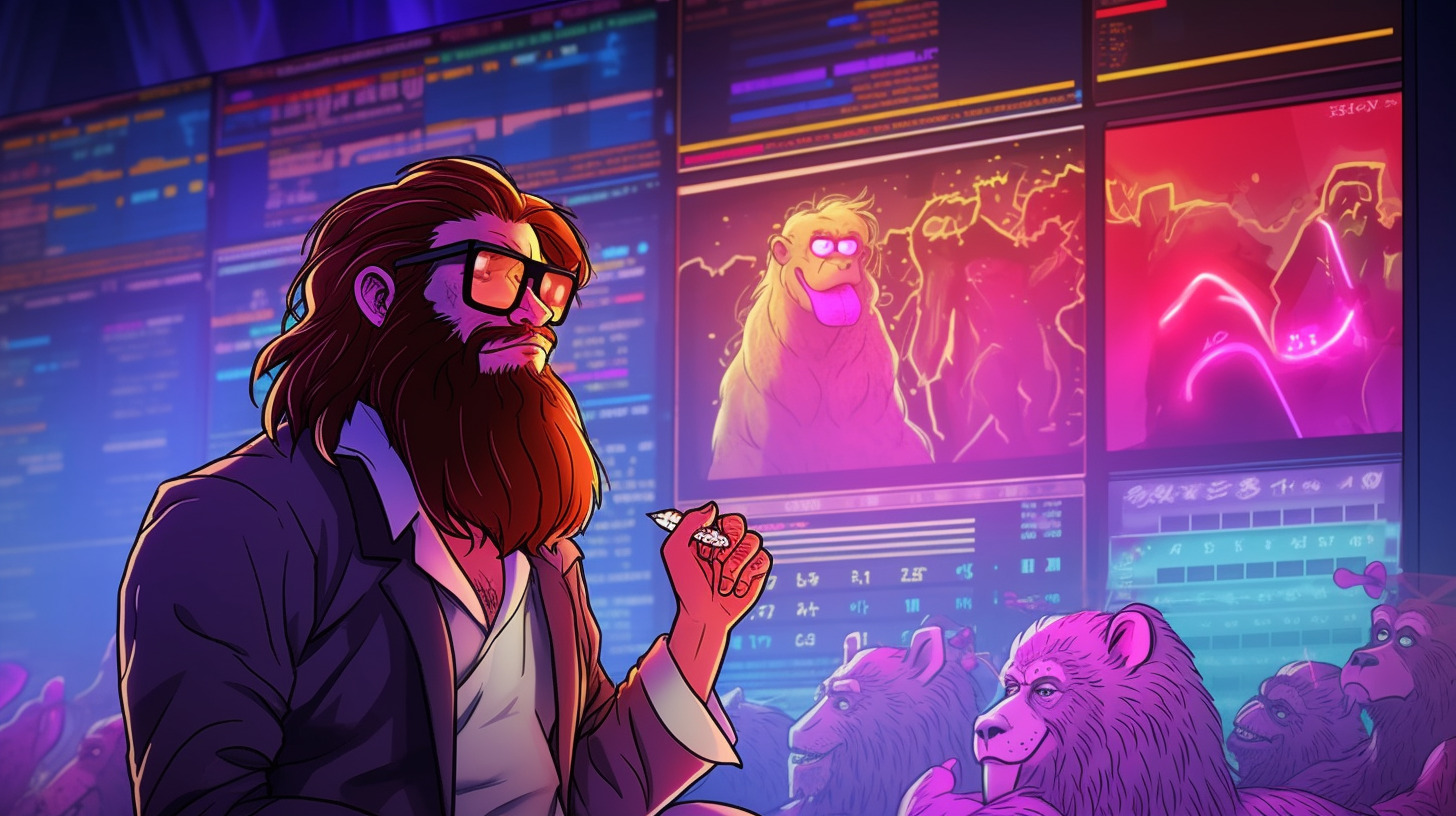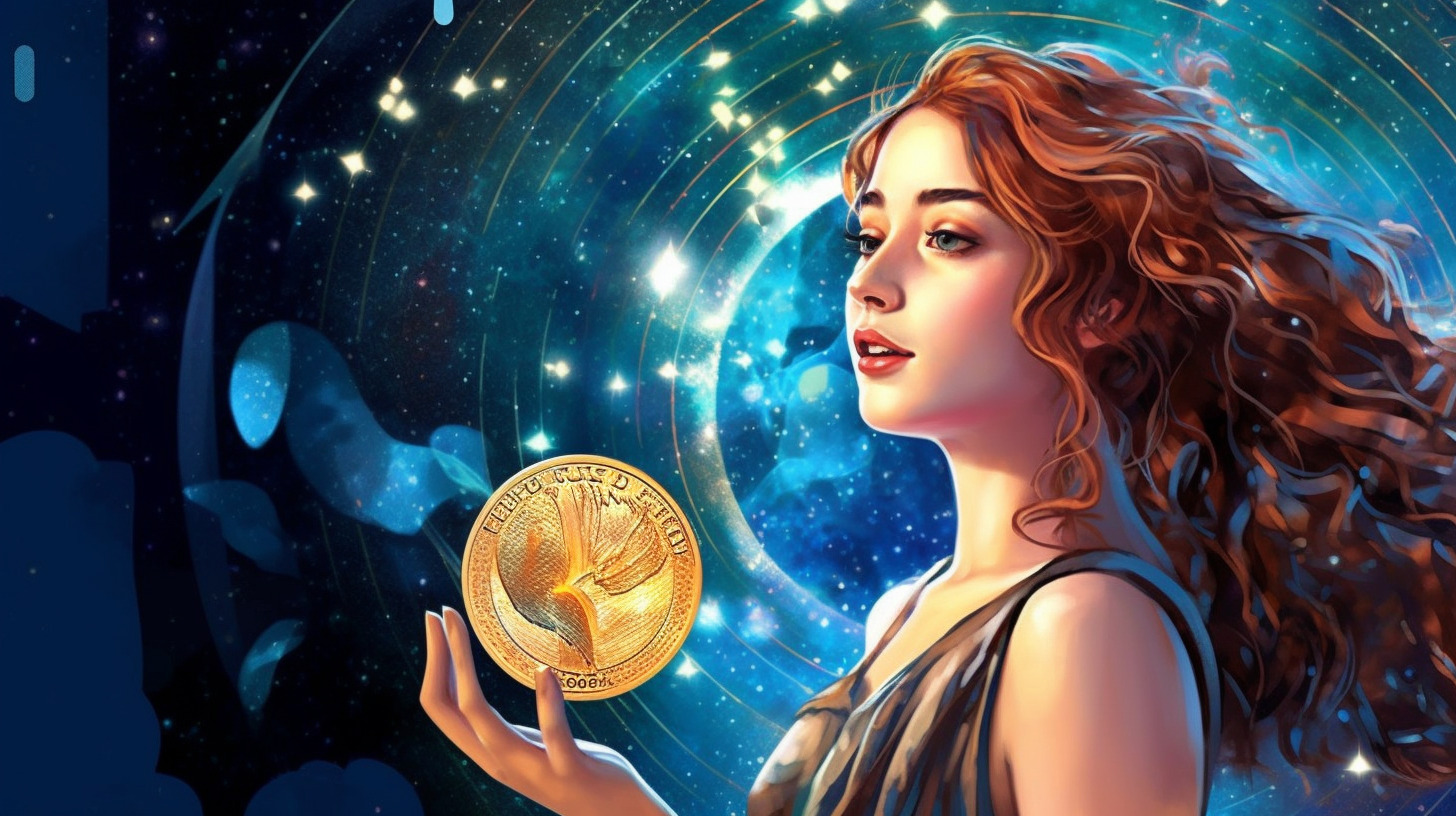I. Into the NFT Storm: Ethereum Promoters and the Tides of Change
Ethereum promoters have been pivotal players in the non-fungible token (NFT) revolution, a cultural phenomenon that has redefined the art world in the last couple of years. These digital assets, stored on blockchain, and tied to unique pieces of content, have created a new wave of opportunities for creators to monetize their work. At its zenith, the NFT market witnessed transactions of astronomical values, with digital artworks, collectibles, music, and even tweets being tokenized and sold for staggering prices. The sale of Beeple’s artwork “Everydays: The First 5000 Days” for an eye-watering $69 million at a Christie’s auction in March 2021 stands as a testament to the feverish heights this market reached.
However, markets with sudden influxes of interest and capital are often subject to significant volatility. The NFT space is no exception. In recent times, a palpable downturn has been observed in the NFT market. This decline has impacted major players in the industry, such as OpenSea, the world’s largest NFT marketplace, which recently disclosed significant layoffs amid falling NFT sales and prices.
Coinciding with this market cooldown, Ethereum promoters have been known to adopt aggressive promotional tactics. Their target often comprises artists from other blockchain platforms, enticing them with grand promises of hefty profits. They leverage the allure of high-profile sales to draw artists into minting their works as NFTs on the Ethereum blockchain and listing them on platforms like OpenSea.
This rise in aggressive tactics from Ethereum promoters, particularly amidst market downturns, highlights the importance of caution and informed decision-making within the NFT landscape. Artists need to be well-versed with the realities of the market, the costs associated with minting on different platforms, and the crucial role they play in promoting their work.
This article aims to equip NFT artists with the knowledge required to navigate this evolving landscape, recognize aggressive promoter tactics, understand the realities of the NFT market, and make well-informed decisions about where to mint their NFTs.
II. The Allure of Ethereum and OpenSea
Promoters might point to the potential for astronomical profits, but the data tells a different story. Since the start of the year, the NFT market has seen a significant cooling. The JPG NFT Index Price, which tracks high-profile token collections, has dropped nearly 69% since its launch in April. In other words, even the most sought-after collections are not immune to market fluctuations and downturns.
This downturn has significant implications for artists considering minting their work on Ethereum and selling on OpenSea. With fewer buyers in the market and the high costs associated with minting and listing NFTs, artists may find it more difficult to sell their work and recoup their investments. As such, it’s essential to weigh these realities against the promises of aggressive promoters. Remember, when it comes to NFTs, as with any investment, potential rewards come with associated risks.
III. Spotting Aggressive Promoters
Promoters might also promise visibility and sales on platforms like OpenSea. However, with the sheer volume of NFTs listed on these platforms, visibility is far from guaranteed. Without substantial self-promotion and marketing, new artists’ works can easily be lost in the crowd.
As an artist, your passion and creativity are valuable. They are the fuel that drives innovation in the NFT space. While Ethereum and OpenSea might be the biggest names in the game right now, there are other options out there. Platforms on other blockchains, such as Cardano, offer opportunities to mint and sell NFTs at a fraction of the gas cost. Remember, you have a choice. Being informed about aggressive promoter tactics empowers you to make the best decision for your art and your future in the NFT market.
IV. The Hidden Costs of Minting on Ethereum
The key thing to remember is that these fees are upfront costs. That means you pay them whether or not your NFT sells. Promoters offering huge potential profits often neglect to mention these fees, leaving artists unaware of the substantial initial investment required to mint on Ethereum.
Promoters may paint a picture of easy visibility and quick sales, but the reality can be quite different. Artists new to the platform often find themselves lost in the vast sea of NFTs, with their work going unnoticed. In the face of such odds, promises of quick sales and huge profits should be taken with a grain of caution.
In the end, the lure of Ethereum and platforms like OpenSea should be weighed against the hidden costs and the challenges they present. Knowledge is power, and understanding these aspects empowers artists to make informed decisions that align with their goals and values.
V. The Importance of Self-Promotion
While aggressive promoters might promise to take your NFTs to the moon, in reality, the onus of promoting your work falls on you. It’s your passion and your story that will resonate with potential buyers and make your NFTs stand out in the sea of digital assets.
Here are a few self-promotion strategies that NFT artists have successfully used:
-
-
- Social Media Engagement: Regularly posting your work and interacting with your followers on platforms like Instagram, Twitter, or Discord can help build a strong community around your art. Engaging directly with your audience creates a personal connection that can boost interest and sales.
- Collaborations and Partnerships: Collaborating with other artists or influencers in the NFT space can expose your work to new audiences. Joint projects or cross-promotions can create a win-win situation for all parties involved.
- Behind the Scenes Content: Sharing the process of creating your NFTs can provide an interesting perspective for potential buyers. This can include sketches, work-in-progress updates, or even live-streaming your creation process.
- Storytelling: Every piece of art has a story behind it, and telling that story can create an emotional connection with potential buyers. This could be the inspiration behind the piece, the challenges you faced while creating it, or the message you hope to convey through it.
- A Personalized Website or Blog: Having a dedicated space where you can showcase your work, share updates, and tell your story can be highly beneficial. It offers a one-stop destination for anyone interested in your work and can improve your professional appearance.
- Active Participation in NFT Communities: Engaging in discussions, contributing insights, and being an active part of NFT communities can help raise your profile in the ecosystem. It also provides a chance to keep up with the latest trends, meet potential buyers, and learn from other artists’ experiences.
By taking an active role in promoting your own work, you can drive interest in your NFTs, connect with potential buyers, and navigate the crowded market more effectively. Remember, self-promotion isn’t just about selling—it’s about building relationships, growing your audience, and sharing your passion for art with the world.
-
VI. The Advantages of Alternatives to Ethereum
One significant advantage of Cardano is its considerably lower transaction fees, also known as gas fees. This is a crucial factor to consider for artists, as the cost of minting NFTs on Ethereum can be prohibitively high, especially when network congestion causes gas prices to spike. On Cardano, these costs are drastically reduced, making it a more accessible platform for artists to mint their NFTs.
Moreover, Cardano’s commitment to sustainability and its community-focused approach may align more closely with the values of many artists, offering a platform that not only facilitates their work but also shares their values.
Before jumping into the NFT world, take the time to research different blockchains and marketplaces. Look beyond the aggressive promotional tactics and consider factors like transaction costs, platform ethos, user experience, community engagement, and support for artists.
In the end, making an informed decision about where to mint and sell your NFTs can save you from potential pitfalls, ensuring that you get the most out of your artistic endeavors in the NFT space
VII. Navigating the NFT Universe: Making Informed Choices and Charting Your Own Path
The promises of huge gains made by promoters can be tempting, especially in light of success stories in the NFT market. However, it’s important to separate the marketing from reality. Understand that platforms like OpenSea, while currently being the largest NFT marketplace, have faced significant challenges in the wake of market downturns. A clear example of this is their recent layoffs, signifying a significant decline in NFT sales and prices.
Aggressive promoters often target artists from other blockchains, offering unrealistic prices to lure them onto their preferred platforms. Be wary of these tactics and understand that entering a crowded platform like OpenSea comes with its own set of challenges, including the necessity for intense self-promotion and visibility strategies.
Furthermore, remember the hidden costs of minting on Ethereum, such as high gas fees. These costs can quickly add up, potentially outweighing any profits if you’re not careful.
There are alternatives to Ethereum that offer unique benefits. For instance, Cardano offers lower gas fees, making it a more affordable option for many artists. It’s essential to explore these alternatives and consider the one that aligns best with your needs and values.
In conclusion, while the NFT space offers exciting opportunities, it also demands careful navigation. Stay vigilant against aggressive promoters, make informed decisions about where to mint your NFTs, and always consider your options carefully. The most important thing is to find a platform that supports your art, respects your values, and offers a supportive community for you to thrive in. The world of NFTs is vast and varied – there’s a place for every artist to shine.







